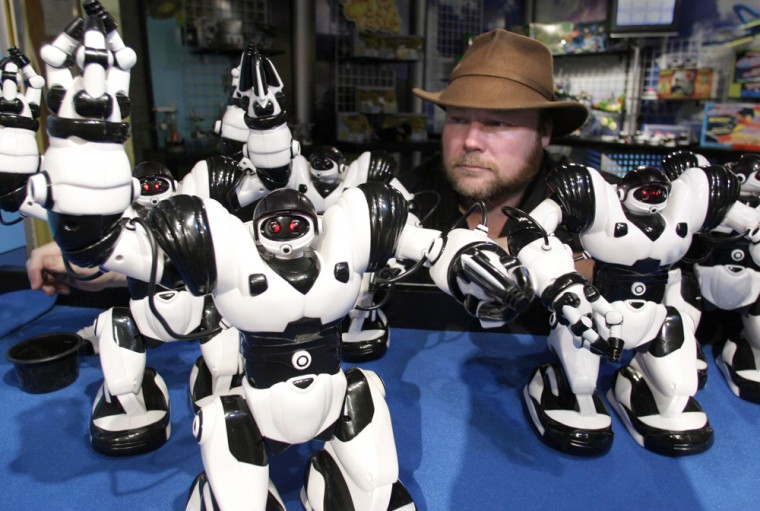One of this year's hottest holiday toys is a robot that owes its design to a physicist who used to work for NASA. The foot-high contraption, called Robosapien, has won praise from robotics enthusiasts worldwide. And yet, it's not above doing a goofy disco move, showing off a karate chop and making rude noises.
The gizmo may aspire to the technical sophistication of "I, Robot," but it has the manners of the beer-swilling Bender from "Futurama."
Robosapien serves as just one example of how toymakers are blending high-tech electronics and lowbrow humor for a winning combination.
"They finally figured out a way to have the high-tech add play value and not get in the way of having fun," said consumer specialist Herb Weisbaum, who puts hundreds of playthings through their paces for NBC's "Today" Toy Test.
Nowadays, nearly every toy line worth its salt has a high-tech component embedded within: As examples, Weisbaum cites Dora's Talking Dollhouse and Mega Bloks' My Pirate Ship, two "traditional" toys that feature chip-controlled sensors and sounds. "All of a sudden the toys have these smart little things, but they're not getting in the way," he said.
As toy companies get smarter about adapting innovations to their products, it's getting harder to tell where the technology ends and the play begins. Nevertheless, there's a special breed of toy that puts high-tech front and center — and this year, several reviewers have crowned Robosapien, manufactured by Hong Kong-based Wow Wee, as the best of breed.
Robosapien: High-tech with 'tude
Perhaps it's the pedigree that sets Robosapien apart: The toy's designer, Mark Tilden, has done research on biomorphic robotics for NASA, the Defense Advanced Research Projects Agency and Los Alamos National Laboratory.
"Most of my science stuff was highly controversial, because though it worked, it was not built in conventional fashion so lacked the predictablity to be politically profitable. Few colleagues studied or used it," Tilden told MSNBC.com in an e-mail interview. "Still, that was no problem for the toy industry."
Perhaps it's the hackability: Tilden made the robot so that it could be easily taken apart and modified by robo-geeks, and there's a rising tide of Web sites and online forums devoted to Robosapien hacking. Servo magazine even sponsored a "Hack-a-Sapien" contest, with the winner to be announced in next month's issue.
But most likely it's the combination of relatively high functionality and a relatively low price ($80 to $100). "This is the first really cool, reasonably priced kids' robot that acts like a robot," Weisberg said.
It doesn't hurt that Robosapien grunts, roars, dances, gives high-fives, belches and even passes cyber-gas. "Robosapien is not a devolved human," Tilden said. "He's an evolved robot, that burps, for money."
The battery-powered Robosapien can perform 67 different functions, based on commands that you beam from a hand-held remote control. You can even chain those commands together and create sequences that are activated by touch or sound, turning the toy into a mini-watchdog, er, watchrobot.
Although the manufacturer, Hong Kong-based Wow Wee, says Robosapien is appropriate even for 6-year-olds, smaller children might need a parent's help to navigate some of the more arcane commands (unless your child is Jimmy Neutron, Boy Genius).
Tilden said Robosapien is just the beginning, with more to come next year. "We're expanding and maturing our robots' family line," he told MSNBC.com. "We're hoping to do for vision what we've done for walking. That's all I can say."
Here are four more high-tech toys that have assimilated a touch of fun:
20Q: Guessing game with artificial intelligence
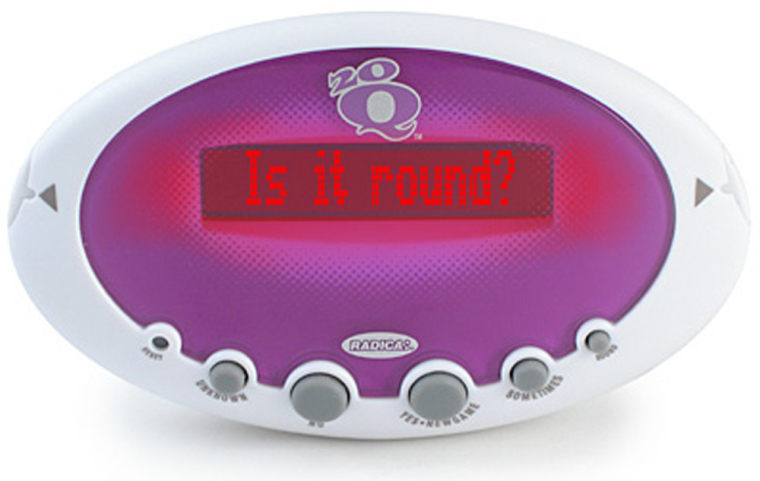
Remember "Twenty Questions," the age-old game that gives you 20 chances to narrow down on what someone else has in mind by asking yes-or-no questions? (Actually, the first question is "Is it animal, vegetable or mineral?") In this case, it's the 20Q hand-held device that asks the questions, by flashing them on a scrolling display screen. You respond by pressing the appropriate buttons beneath the screen.
The Radica toy is based on the Internet version of 20Q, which is uncannily good. If it doesn't agree with your answers, it may even quibble with you after the game.
20Q is judged appropriate for ages 8 and up, and costs about $20.
V.Smile: Video game with an educational flavor
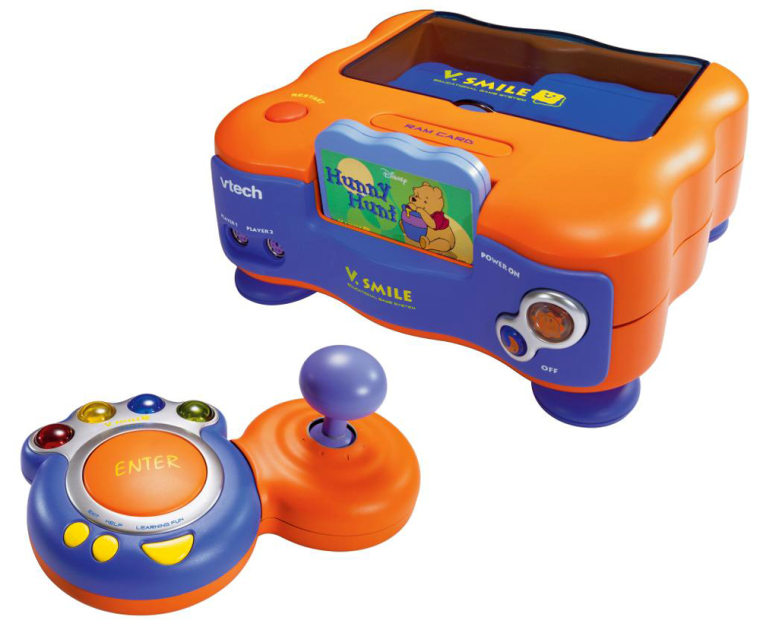
VTech's V.Smile video game system earned a high score in the "Today" Toy Test, thanks in part to a big-button, big-joystick design that makes it easy for even preschoolers to play.
You can plug in a variety of game cartridges that feature TV characters ranging from Care Bears to Scooby-Doo — but instead of the standard shoot-'em-up fare, the games offer nonviolent, fun adventures that also teach players about colors, numbers and words.
Like most video game systems, V.Smile plugs directly into your TV set. The console and the introductory game, Alphabet Park Adventure, goes for $50 to $60. Other games, which cover ages 3 to 7, are sold separately for about $20 each.
VideoNow Color: Hand-held player with colorful twist
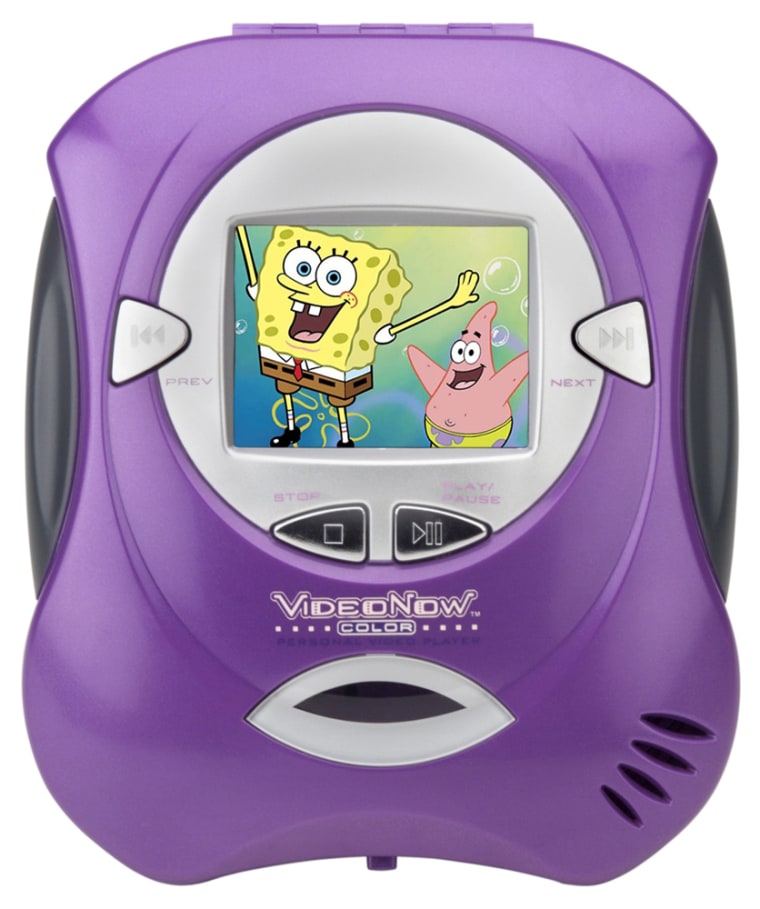
Last year, Hasbro's VideoNow personal video player made its debut in black and white. This year, it's been upgraded to a color version, and VideoNow Jr. has been added to the product line.
The basic principle is the same: Pop in a proprietary-format, palm-sized video disk, and you can watch children's programs such as "Blue's Clues," "SpongeBob SquarePants" or even the aforementioned "Jimmy Neutron," as well as more grown-up shows including NBC's "Fear Factor" and ABC's "America's Funniest Home Videos." (MSNBC is a Microsoft-NBC joint venture.)
VideoNow Jr., marketed by Playskool, has chunkier buttons for the Sesame Street set.
The new players can play the old black-and-white disks, but the new disks won't work on the old players. VideoNow Color (for ages 6 and up) and VideoNow Jr. (for ages 3 and up) sell in the $65 to $85 range. The disks go for $6 to $9 each, or $15 to $17 for a three-pack.
AntWorks: Animal farm with space-age materials
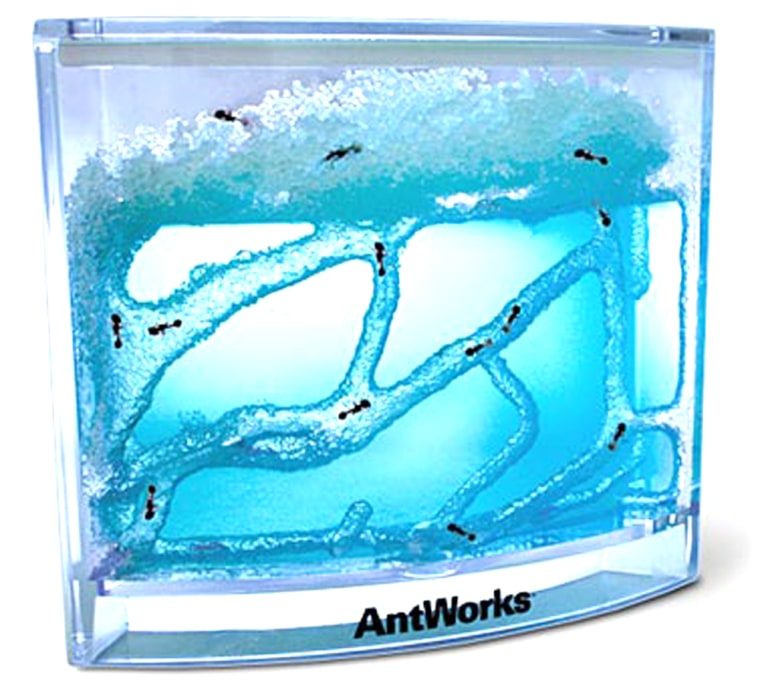
Once upon a time, the ant farm served as the stereotypical science toy: Budding biologists could watch a colony of ants burrow a network of tunnels through sand inside a sandwich of clear glass. Nowadays, the original idea seems fraught with the risk of breakage and spillage — but you can depend on NASA technology to come to the rescue.
This high-tech ant habitat is filled with a nutrient-rich gel that not only provides a home for the critters, but feeds them as well. And its curved plastic shell makes it more stable.
"Based directly on a student experiment that flew on the space shuttle, AntWorks replicates the same systems used to test how ants could tunnel in the microgravity environment of space," said Robert Pearlman, editor of CollectSpace, a Web site specializing in space-related collectibles.
The kit, designed for ages 8 and up, is priced at about $20. You still have to provide your own ants, or order a mail-order batch using the enclosed form. The colony should last one to three months before it dies out. Then just add a new batch of ants to the same habitat — and they will be assimilated.
